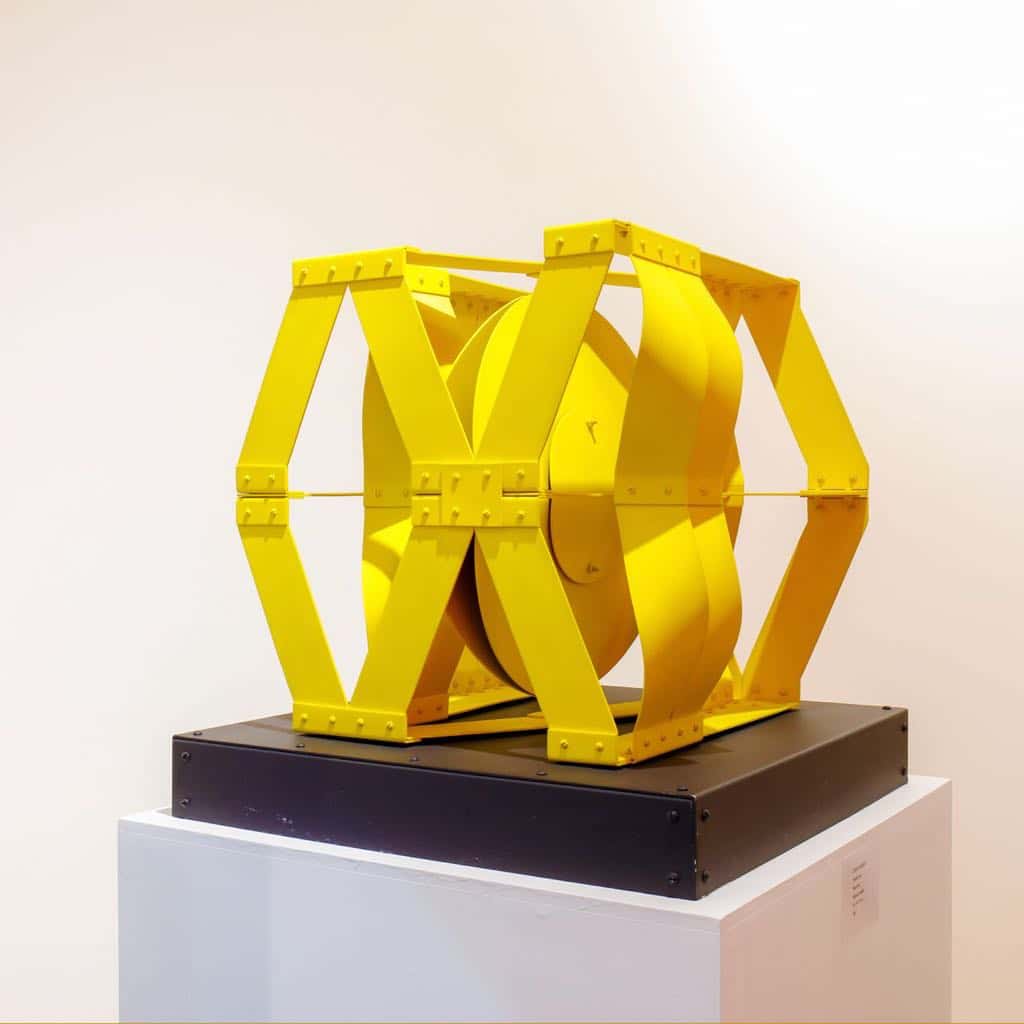
Edgar Negret: Freedom, Shapes and Colors
On October 11, 1920, Edgar Negret was born in Popayán, son of General Rafael Negret Vivas and María Dueñas, the last of 10 children. From an early ag
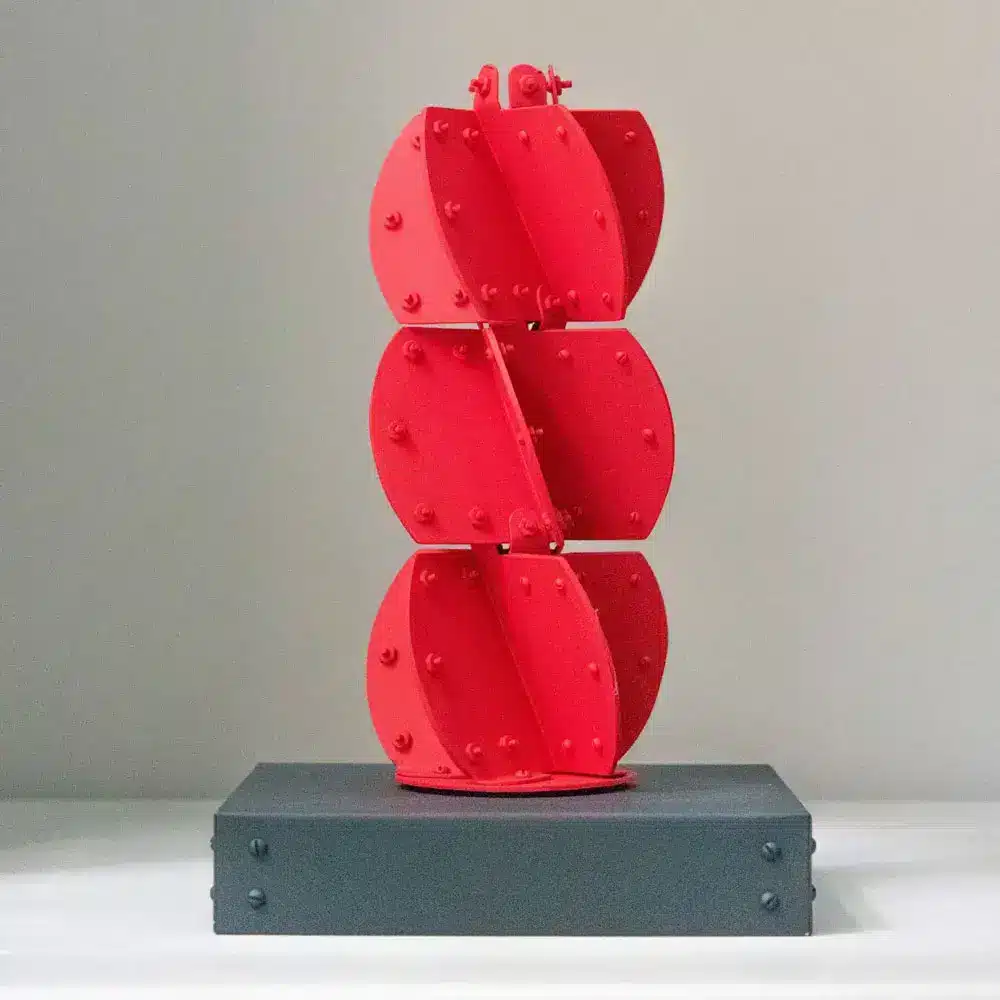
Painted aluminum
38 x 25 x 25 cm
15 x 9 7/8 x 9 7/8 in.
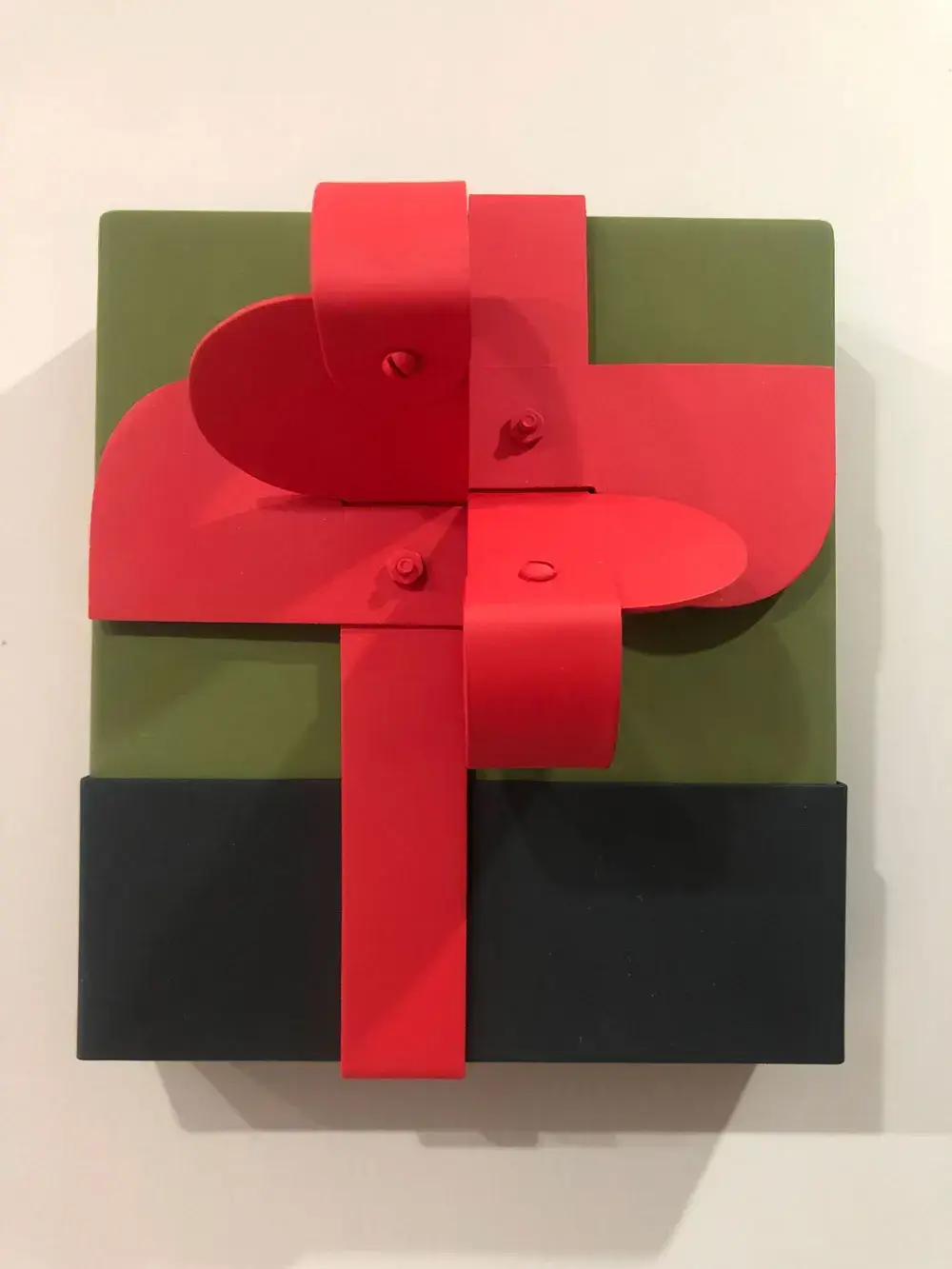
Painted aluminum
26 x 23 x 13 cm
10 1/4 x 9 x 5 1/8 in
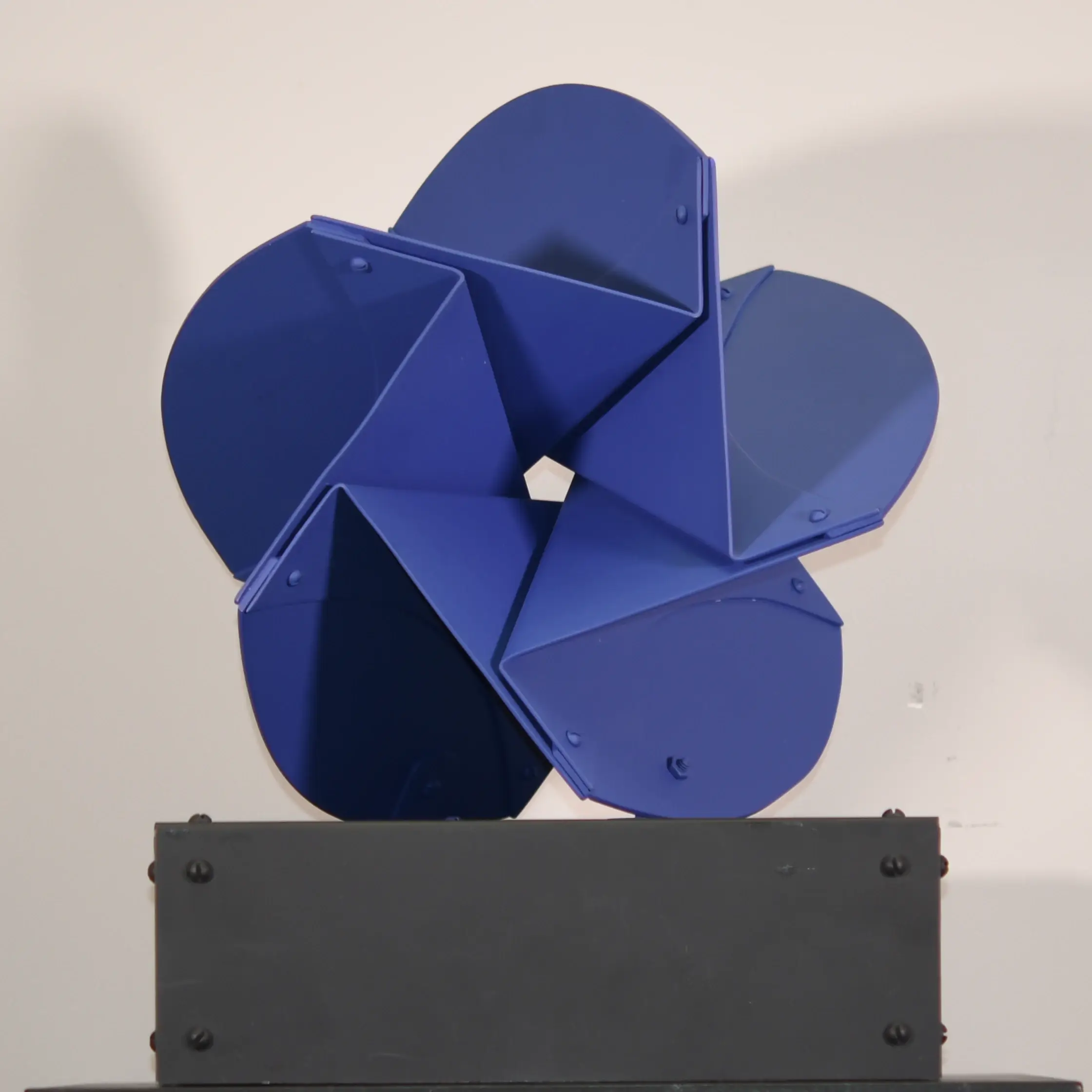
Painted aluminum
41 x 30 x 30 cm
16 1/8 x 11 3/4 x 11 3/4 in.

Painted aluminum
38.5 x 23.3 x 23.3 cm (38.5 x 23.3 x 23.3 cm)
15 1/8 x 9 1/8 x 9 1/8 in.
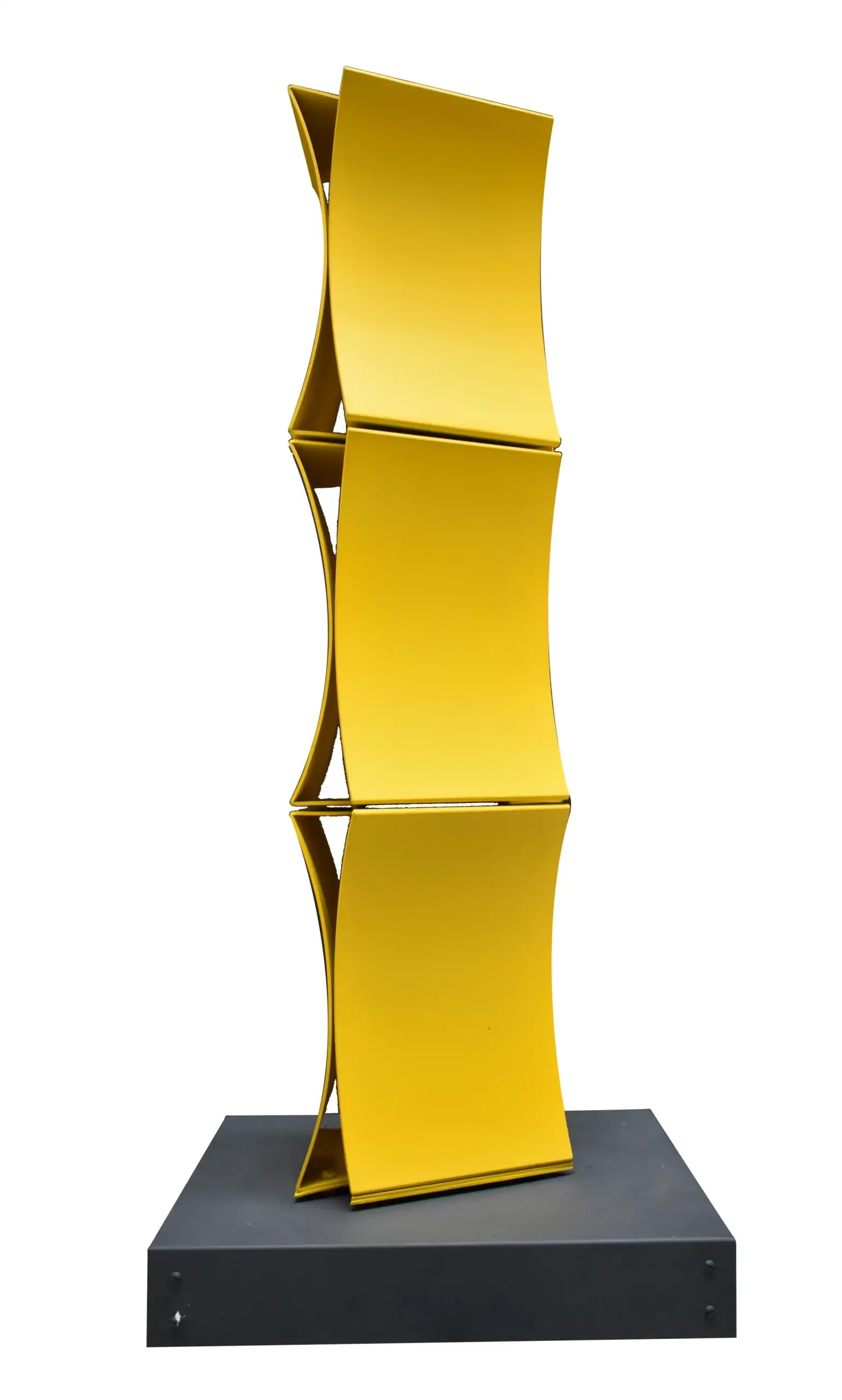
Painted aluminum
105 x 45.5 x 45.5 cm
41 3/8 x 17 7/8 x 17 7/8 in.
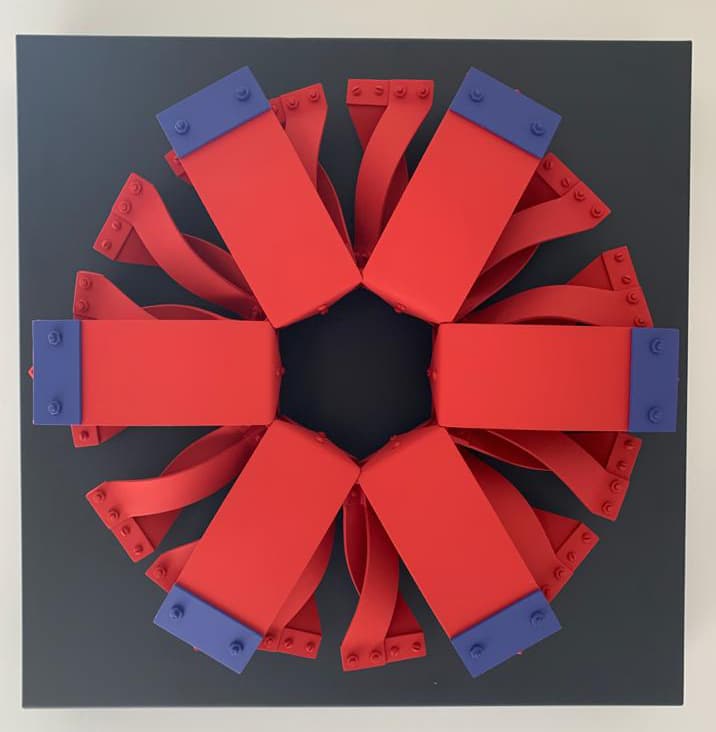
Painted aluminum
60 x 60 x 20 cm
23 5/8 x 23 5/8 x 23 5/8 x 7 7/8 in.
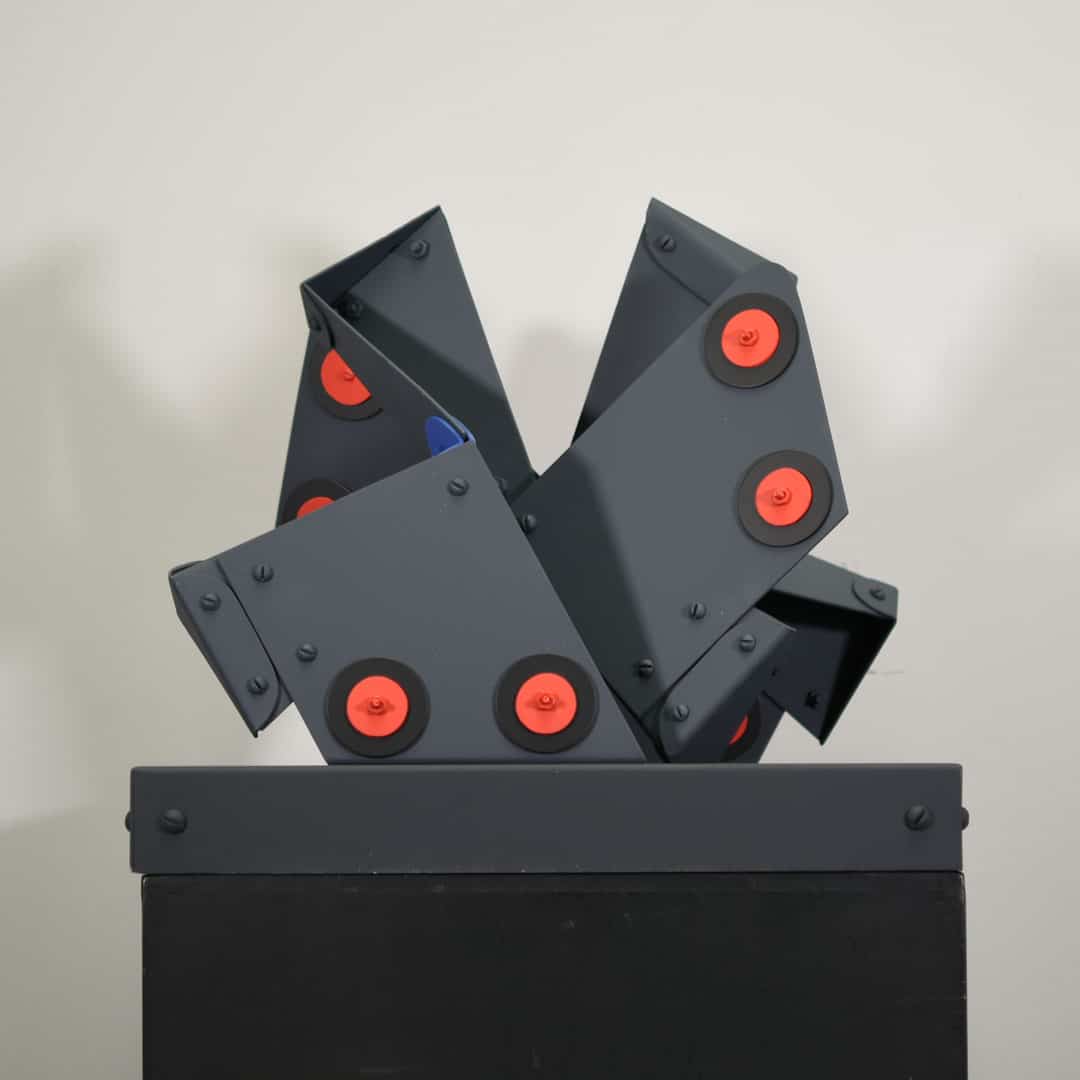
Painted aluminum
36 x 44 x 40 cm
14 1/8 x 17 3/8 x 15 3/4 in.
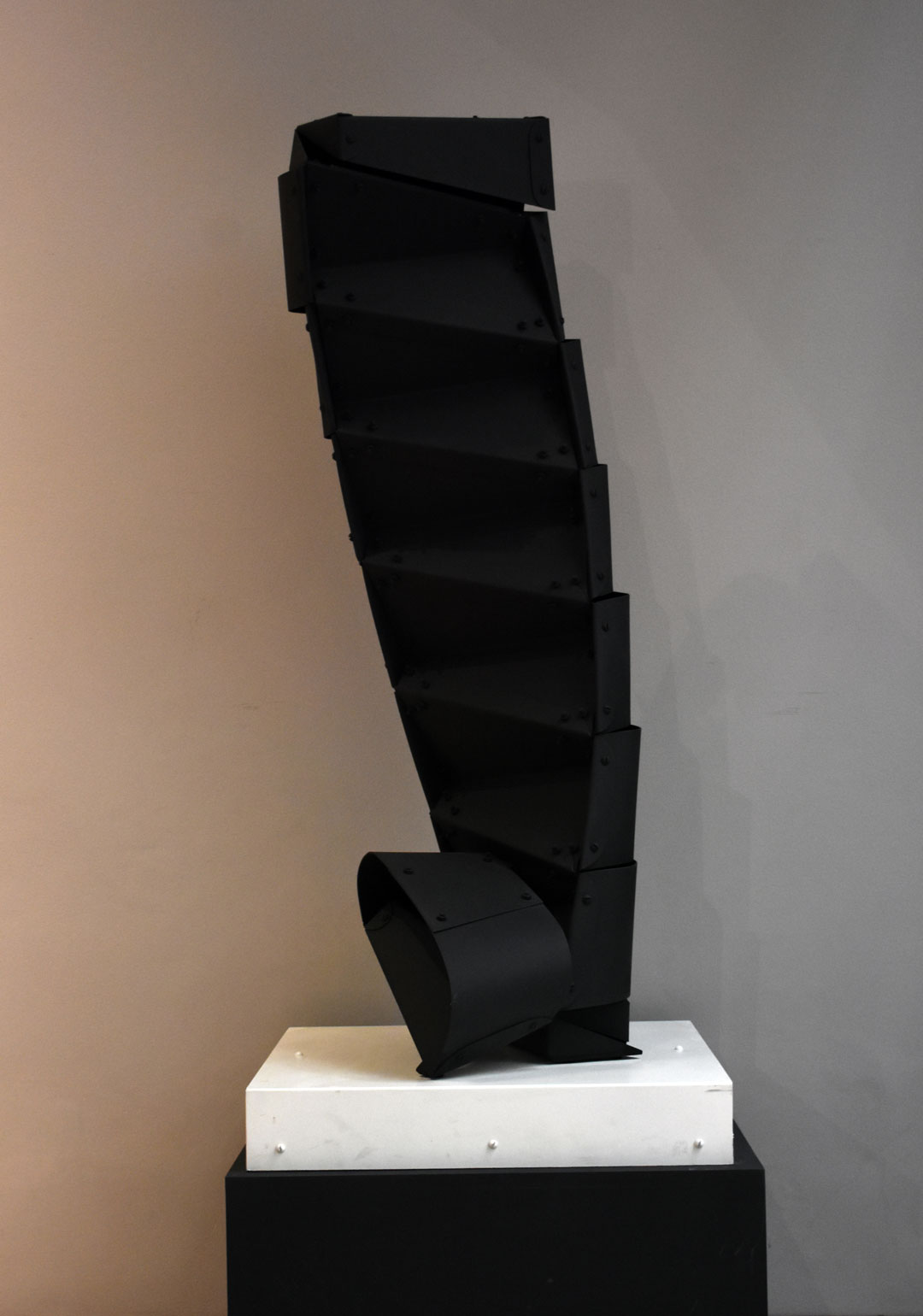
Painted aluminum
140 x 60 x 60 cm
55 1/8 x 23 5/8 x 23 5/8 in.
Unique edition
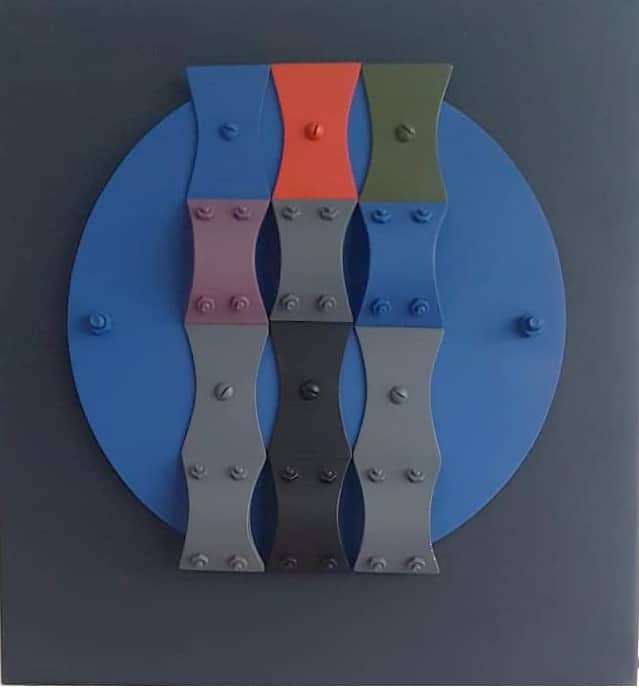
Painted aluminum
43 x 40 x 7 cm
16 7/8 x 15 3/4 x 2 3/4 in.
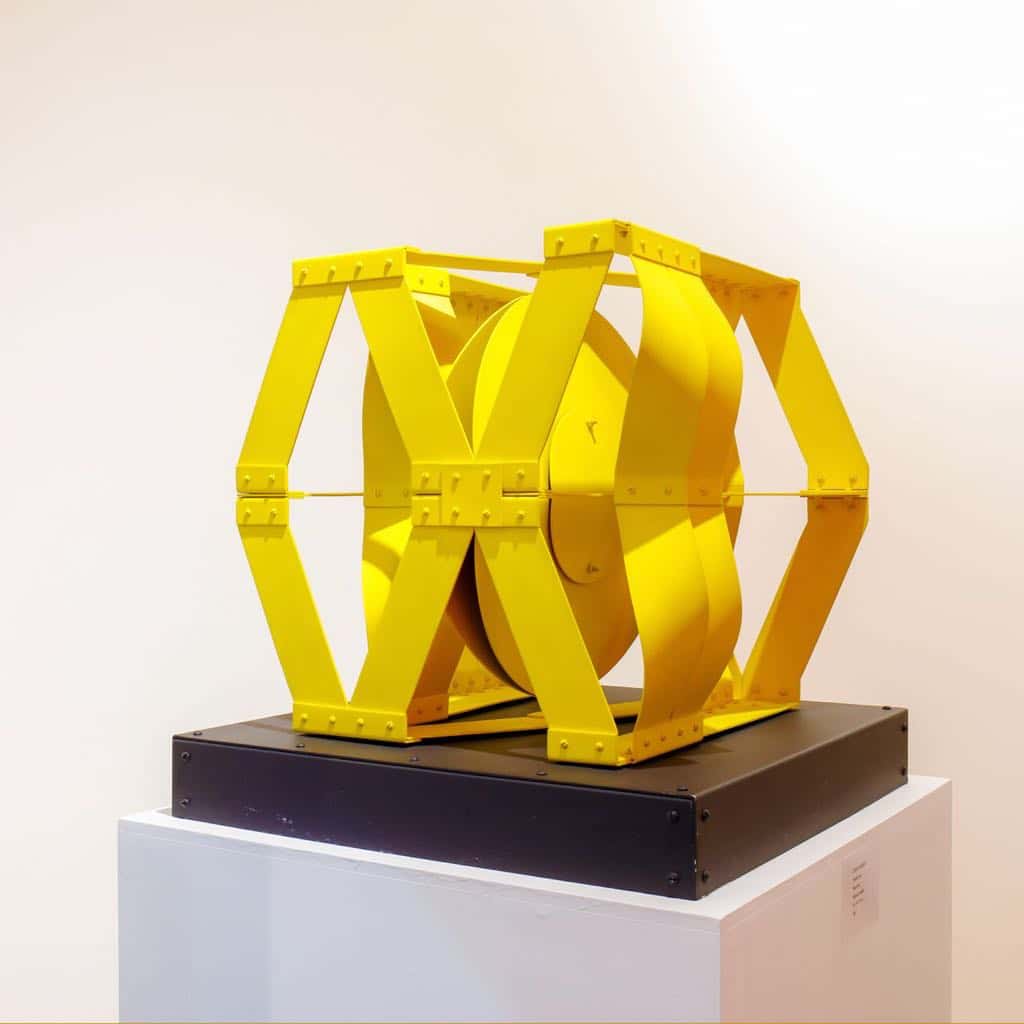
Edgar Negret was a Colombian artist known for his geometric sculptures. His works depicted natural forms such as the sun and flowers using industrial materials. It was the artist’s feeling that reusing mechanical forms in non-utilitarian objects was a magical act.
Edgar Negret was born on October 11, 1920 in Popayán, son of General Rafael Negret Vivas and María Dueñas. He studied at the Escuela de Bellas Artes in Cali between 1938 and 1943. Initially he started with watercolors and pastels, but it did not take him long to learn that he would not develop his career in these techniques. In his last year he began to have contact and correspond with the Basque artist Jorge de Oteiza, whom he met in his hometown and with whom he used to talk and learn about modern sculpture,
In 1944, Negret began working on plaster sculpture: heads of the poets Walt Whitman, Guillermo Valencia, Gabriela Mistral and Porfirio Barba-Jacob, religious and mythological themes, which although they showed physical features of the characters they portrayed, did not leave aside the abstract touch that characterized the sculptor so much. These works would be part of his first exhibition in Bogota.
In 1948 he travels for the first time to New York, to the Clay Club Center (now Sculpture Center), where he begins to experiment with wire, metal and iron, and by 1949 he begins to use metal more frequently.
He then traveled to different European capitals for 5 years, to return to New York for another 7 years, and then settled again in the city where he was born, and finally settled in Bogota until his death.
During his return to New York, Negret has possibly the most important period in his artistic career, which is to begin using aluminum as a raw material. Thus, between modeling geometric shapes and giving them life through color, the artist’s characteristic style, which gave him the title of representative of modern Colombian sculpture, shines through.
The series that would have more recognition is “Aparatos mágicos”, made in 1957, where he puts the modern concept of the industrial, specifically the machine, as the center. It makes sense in his words, “reusing mechanical forms in non-utilitarian objects was an act of magic”.
This is how geometric abstraction, the empowerment of volumes and the generation of voluptuous and expressive forms become the characterization of his work, consecrating him as one of the greatest masters of modern sculpture in Latin America, in the words of the critic Marta Traba:
Negret was, therefore, a pioneer of contemporary plastic art in Colombia, which is not necessarily a value judgment. But in addition to this merit, Negret perfected a powerfully original language over the course of approximately ten years of working with metals. Although he may be classified among the neo-classical, or neo-geometric, or “edge” sculptors, his work does not repeat the general findings, nor does it entirely conform to any group position; it is uniquely his own, elaborated with a strange and stubborn perfectionist sense, until the internal space and the metal plates come to accept the profound rhythmic discipline he imposes on them. This energetic interplay of formal relationships can in no way be considered a display of manual dexterity: it sustains it and is animated by a dense, calm content. Allow the forms to flow, to flow slowly, they are coupled, transfigured until they acquire a powerful personality: such is the context that irrigates the forms.
In 2017, his exhibition
Humanized Geometry
This is an anthological journey through the most relevant periods of the master’s work. In relation to some of these works it can be said that Negret achieves the union of two traditionally antagonistic sculptural principles, the constructivist and the organicist, since many of these pieces could be described as figurative, totally representative, without the material, its constructive system or its geometric patterns hindering the formal description or the recognition of its features.
He also died on October 11, giving a circular closure to his life. Today, his works are in the collections of the Museum of Modern Art in New York, the Stedelijk Museum in Amsterdam and the Museum of Modern Art in Bogota.

On October 11, 1920, Edgar Negret was born in Popayán, son of General Rafael Negret Vivas and María Dueñas, the last of 10 children. From an early ag
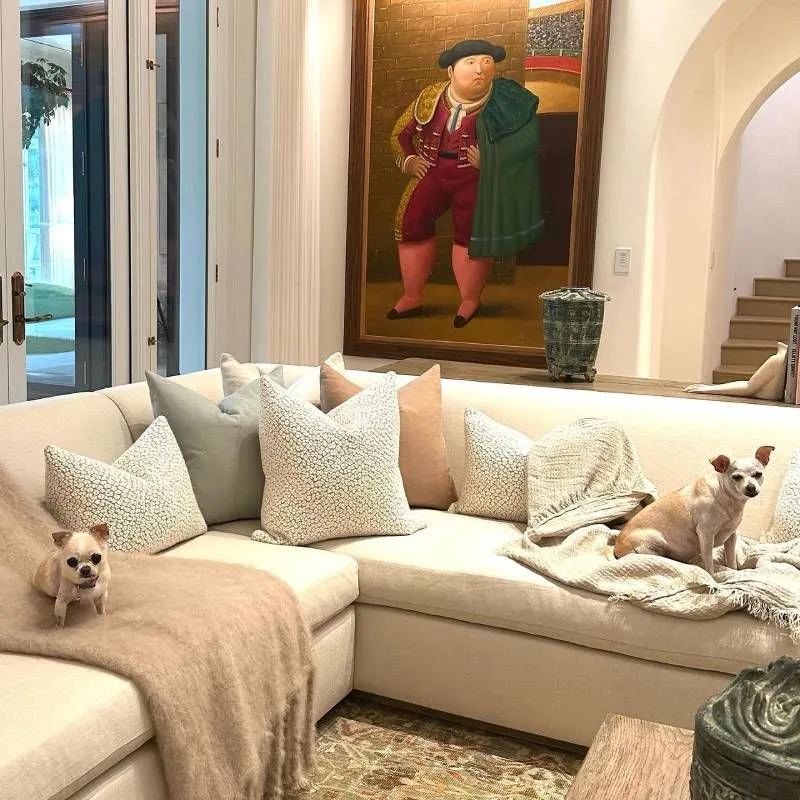
Investing in art can be one of the most exciting and rewarding decisions you make. Beyond its aesthetic value, art has established itself as an intel
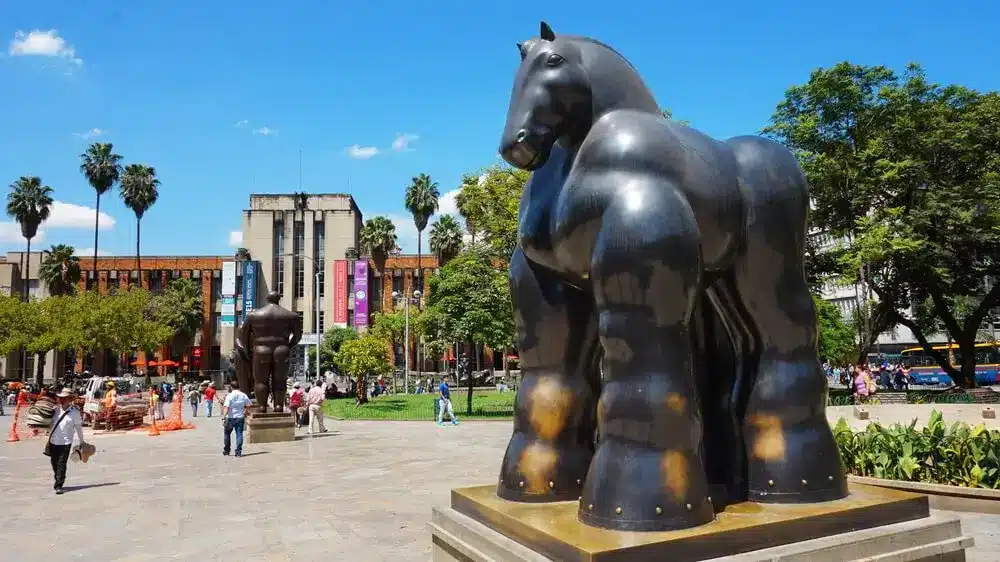
In Colombia’s artistic panorama, sculpture is consolidating its position as a singular means of expression, capable of transmitting the richness of

